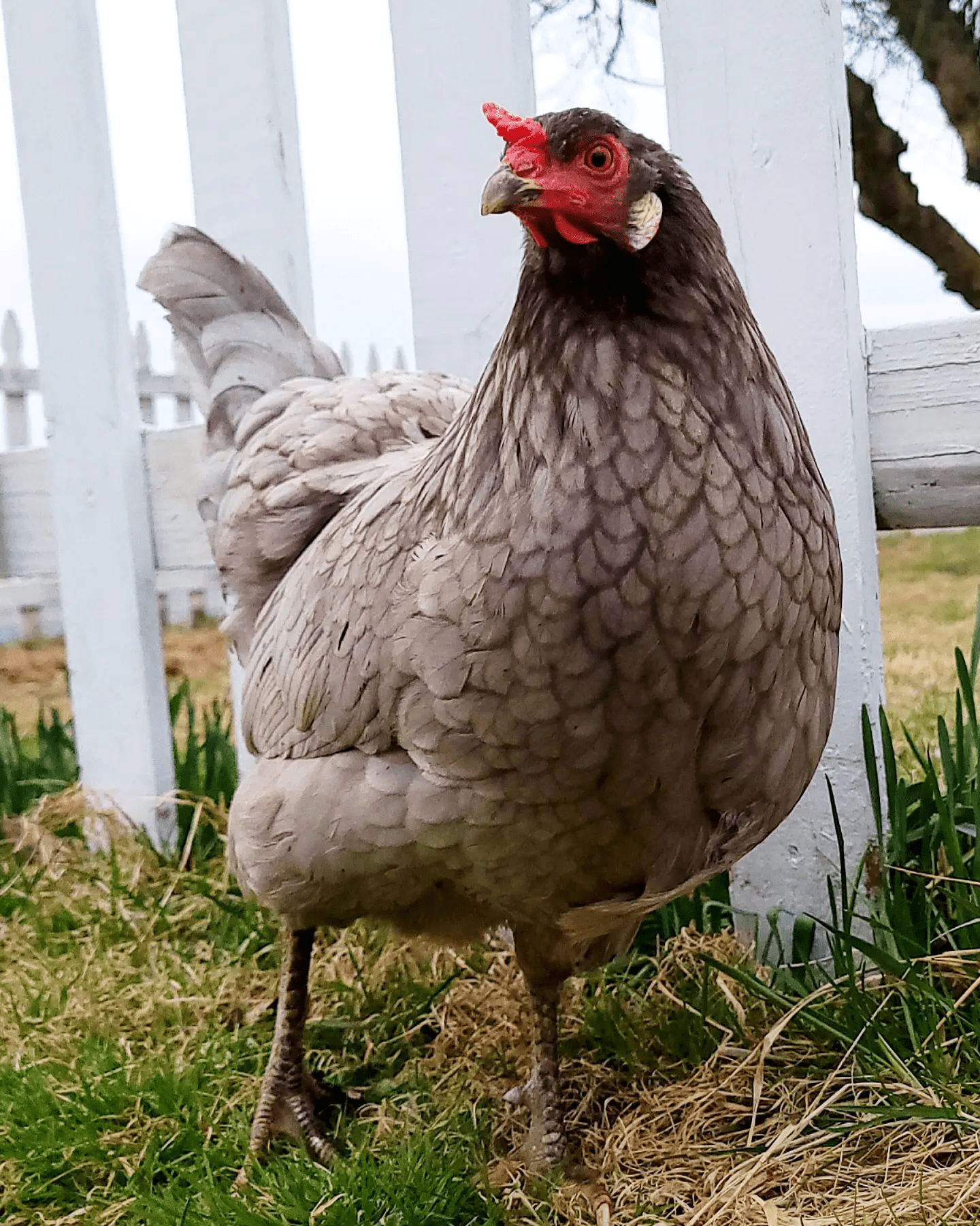The Prairie Bluebell Egger is a generally active bird capable of incredible egg production. A single hen can lay up to 280 eggs annually. One of the main standout features of this chicken breed is that it lays large powdery blue eggs that are cherished in most markets.
Developed to be excellent foragers and hardy, these birds can be a wonderful addition to any backyard chicken farm interested in raising more than just the typical chicken breeds on the market.
A flock of Prairie Bluebell Eggers is easy to raise and also quite productive as far as egg production is concerned. Another wonderful benefit is that the Prairie Bluebell Egger chickens have an incredible feed-to-egg ratio, which can make them quite affordable for backyard owners and profitable for commercial poultry.
Here are some facts and reasons why you might want to consider having a few of these Prairie Bluebell Egger birds on your land.
Origin and History of the Prairie Bluebell Egger
The Prairie Bluebell Egger was developed by Hoover Hatchery as a bird that can lay large, novel blue eggs. This breed of chicken is a hybrid created by crossing White Leghorns with Araucana. The Prairie Bluebell Egger takes after the:
- True Araucana – a blue egg layer
- White Leghorn – a large white egg layer
The idea behind hybrid chickens is that they are designed to take the best traits from their parent stock. As a result of this crossbreeding, the Prairie Bluebell Egger offspring is a breed that is guaranteed to produce large blue eggs. This is a heat tolerant breed with proper shade, ventilation, and water.
The Prairie Bluebell Egger lays blue eggs like the Araucana side of its parentage and large-sized eggs like the White Leghorn side. It also lays lots more eggs, just like the Leghorn.
Characteristics and Appearance of Prairie Bluebell Egger Chickens
Prairie Bluebell Eggers are hybrids, so they borrow a lot from the individual parents in the mix. Here are some characteristics and traits of these chickens that make them stand out.
Colors
Prairie Bluebell Egger chickens tend to come in many colors. It’s not uncommon to find Prairie Bluebell Egger chickens that are black, blue, and even splash-colored. You can also easily find partridge-colored chickens in their midst.
There have also been reports of frosted white chicks, light smoke, gold, and even grey-colored chicks hatching.
Prairie Bluebell chicks tend to have a pea comb and always carry at least one blue egg gene. However, it’s not uncommon for the second-generation Prairie Bluebell chicks (F2) to carry two blue egg genes or even two white egg genes. These chicks often have fluffy or smooth faces and look like Easter Egger hens or large-bodied Americana chicks.
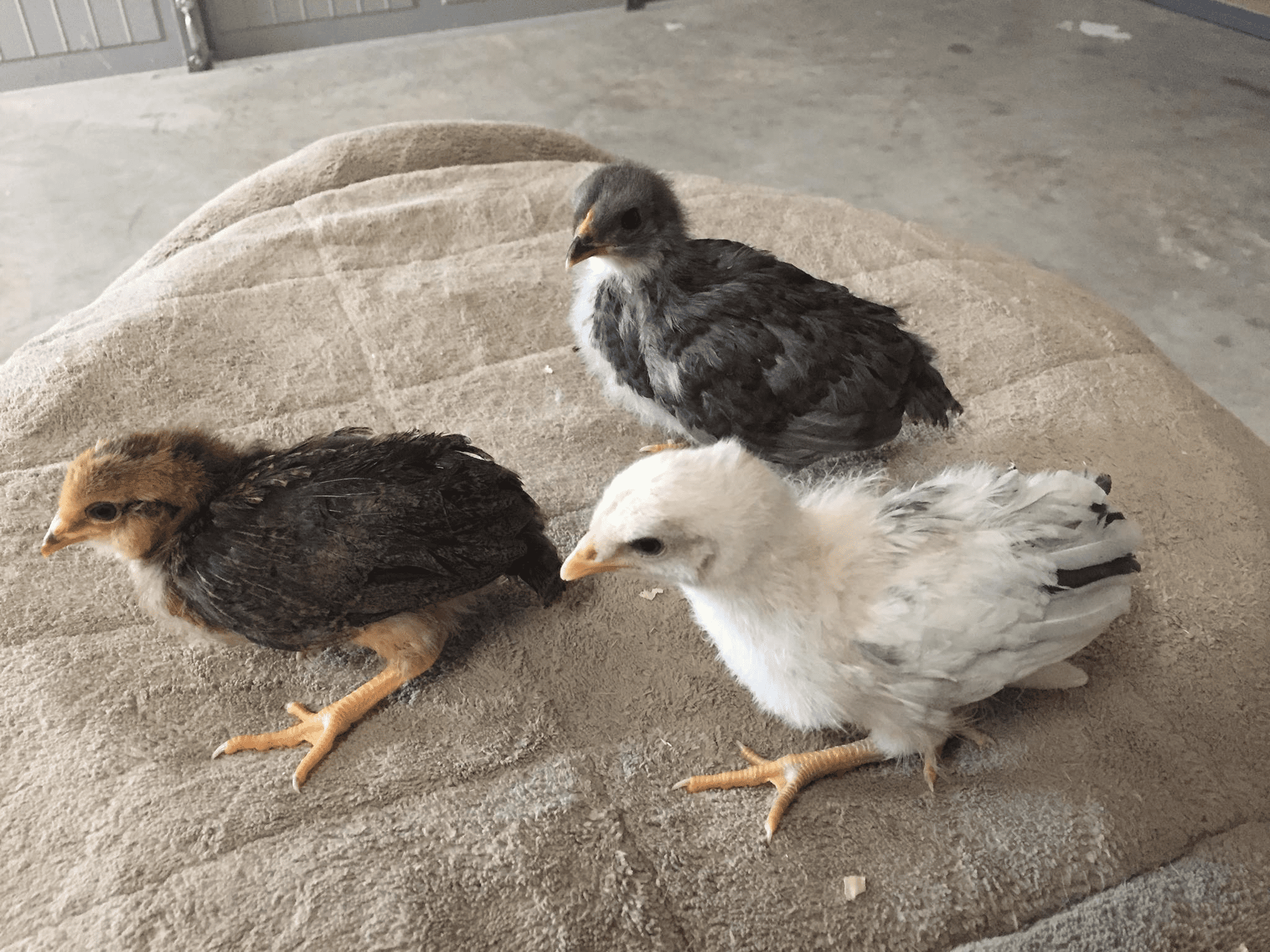
Predator Avoidance
Of all the birds in this hybrid, the brown Prairie Bluebells and Blue (grey) varieties are particularly clever and adept at evading predators. This is often thanks to the fact that they have excellent camouflage and sharp eyes. That, coupled with their speed, agility, and impressive vertical flight, makes the Prairie Bluebell Egger a self-sufficient bird.
An excellent characteristic of this wonderful breed is that they have impeccable predator avoidance. Thanks to the fact that they have Leghorn ancestry, the resulting chicks are extremely athletic.
They have been known to clear 7-foot fences with a simple jump and flap of the wing. This ability to jump often makes it easier for them to patch high up away from the reach of common chicken predators such as wild dogs and skunks. Why Can’t Chickens Fly
Weight for Hens and Roosters
The Prairie Bluebell Egger chickens are medium-sized to lightweight chickens that weigh as little as 4 – 5 pounds by the time they are mature. That means this bird is hardly ever raised as a dual-purpose bird because it doesn’t produce much meat. They are, however, raised specifically for their egg-laying capabilities.
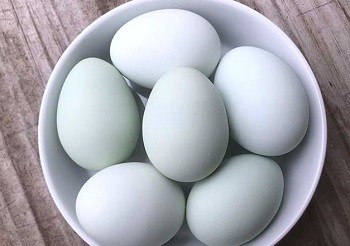
Egg Production
One of the main reasons this breed of chicken was developed is that the Prairie Bluebell Egger chickens are excellent egg layers. They are among the best egg laying chickens. They get that trait from their parentage, as both the White Leghorn hen and the Araucana are prolific layers.
A mature, healthy Prairie Bluebell Egger hen will lay about 280 large blue eggs yearly. This is slightly better than the parents, as the Araucana chickens can lay up to 260 large brown eggs per year while the White Leghorn can lay up to 300 large white eggs per year.
On average, the Prairie Bluebell Egger hens start laying slightly later than most other prolific egg layers. They usually begin laying around the 6th month.
However, it’s not uncommon for some hens to start laying eggs as early as their 16th – 18th week if they are well cared for with proper nutrition and fresh water each day. Place nesting boxes out when they are near laying age.
When the hens reach 18 to 20 weeks of age, begin feeding a layer ration, which provides the added ingredients needed for egg production.
- Number of eggs per year: 280
- Number of eggs per lifetime: Up to 500
- Egg size: Large-sized eggs
- Egg color: Powder blue eggs
- Number of eggs per week: 4 – 5
Personality and Temperament of the Prairie Bluebell Egger Chicken
If you are raising a Prairie Bluebell Egger rooster along with your hens, you can incubate and hatch fertile eggs. The hens may go broody — it’s not common but will depend on the hen — and can hatch their chicks, but this isn’t very common among the breed. Also, they do not breed true.
Prairie Bluebell Egger chickens have inherited most of their personality and temperament from their parentage. These are extremely friendly birds that love foraging for food.
They are free-ranging birds that do well in large spaces. They are, however, a little skittish, which serves them well and keeps them from danger. These qualities make them ideal for farmers who want to raise gentle birds that can gel well with their existing backyard chicken flock.
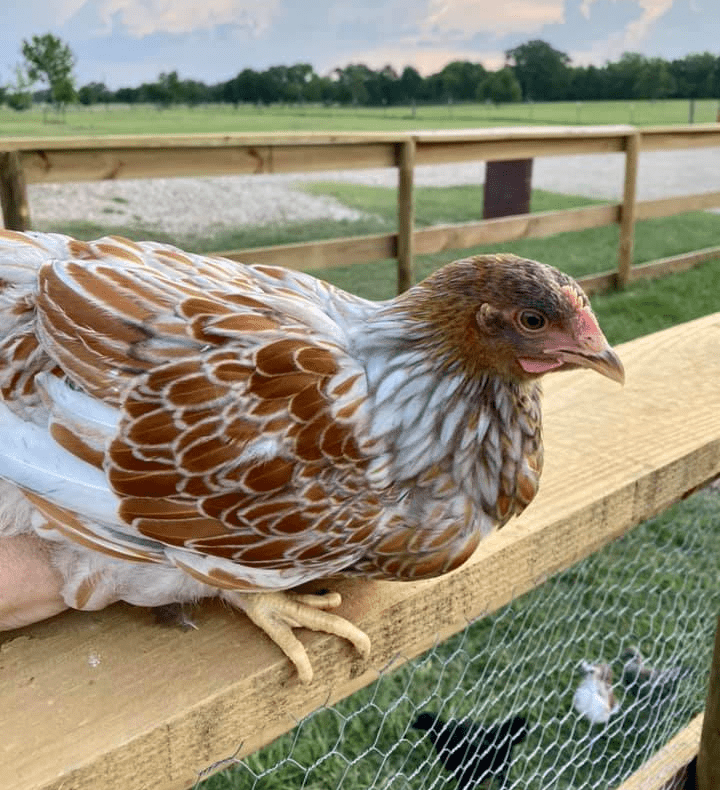
Prairie Bluebell Egger Rooster
If you plan to keep 8 – 10 hens, you can raise a rooster alongside them. A Prairie Bluebell Egger rooster will protect his flock from predators and other threats. They aren’t as aggressive as some roosters from other breeds and do well in mixed flocks. There are pros and cons to keeping a rooster, depending on your property, neighbors, and overall situation.
If you want to hatch chicks, you will need to keep a rooster. If you just want the eggs for eating, you will not need a rooster. Keep the healthiest rooster for mating.
Why Raise Prairie Bluebell Egger Chickens?
There are several good reasons a farmer should consider raising Prairie Bluebell Egger chickens.
Egg Production
Egg production is the number one reason this breed was developed. With the ability to produce up to 280 eggs a year, these birds are prolific layers that can do well commercially.
The best part is that, in most cases, the hens start laying early and keep laying large blue eggs as long as they are healthy.
To maximize their output, be sure they have 14 – 16 hours of daylight daily in the warmer months. I personally like to give my girls a must-deserved break in the winter months. I do not supplement with artificial lighting. Their laying tapers off but they will start laying again in the spring.
Meat Production
While this isn’t the primary reason why these birds are raised (in fact, they aren’t known for their meat production), like every chicken, once they stop laying eggs, they can be culled for meat.
These birds rarely get broody. As such, they can’t be used for growing a flock (if you are keeping a rooster with them) unless you want to incubate them yourself. However, the upside to this is they will keep laying eggs for you.
Commercial Purposes
These blue-colored eggs are often quite valuable. It’s not uncommon for fertile Prairie Blue Chicken eggs to sell for $5 or even more than $7 each to someone who wants to hatch them. Because they are light blue, you may be able to sell them (fertilized or unfertilized) by the dozen for more money than white eggs.
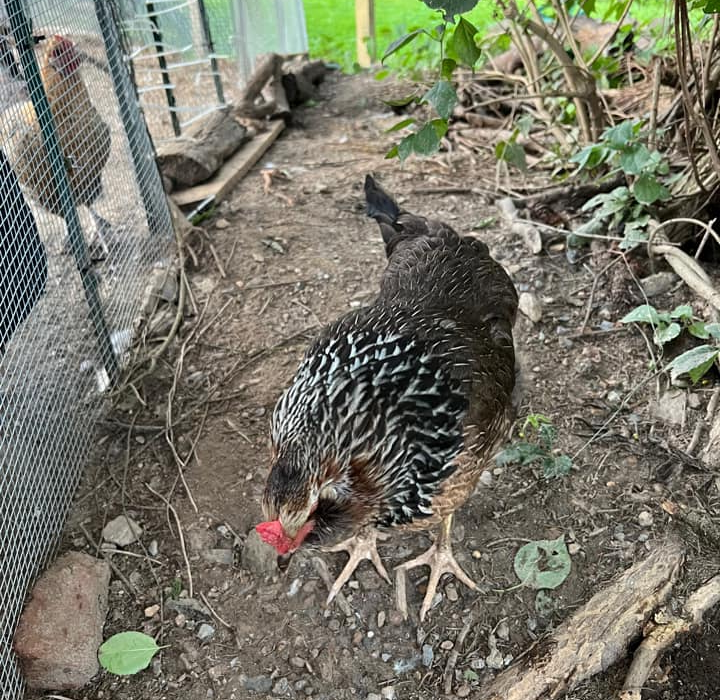
Developed for farmers who want prolific layers that aren’t as common as most other layers, Prairie Bluebell Egger Chickens are an interesting bird to have on any backyard chicken farm.
They lay powdery blue eggs, they are easy to raise, friendly, and an excellent commercial option. They are hardly ever broody as hybrid birds, but it’s been known to happen.
FAQs
Are Prairie Bluebell Egger Chickens hardy?
Yes, these chickens are extremely hardy and can survive a wide range of temperatures. They do well in the heat. That, coupled with the fact that they are predator averse, makes them ideal for backyard farms.
Are Prairie Bluebell Egger Chickens good foragers?
Yes, these chickens are excellent foragers. Although they are prolific layers, they require some feed supplementation to ensure they lay large blue eggs.
What kinds of chickens lay blue eggs?
Several other chicken breeds lay blue eggs. These include:
- Cream Legbar
- Easter Egger
- Arkansas Blue
- Dongxiang
- Whiting True Blue
- Lushi
- Araucana
- Ameraucana
Are Prairie Bluebell Eggers friendly?
Yes, they are friendly and work well in mixed flocks of similar-mannered chickens.
What age do Prairie Bluebell Eggers start laying?
Prairie Bluebell Egger hens start laying when they are 4 – 5 months old. Their novel blue eggs are large and high quality.
What color is a Prairie Bluebell Egger?
Prairie Bluebell Egger chickens can be many colors: Tan, buff, white, brown, blue, splash-colored. They can be lighter or darker colored as well.
What is a Prairie Bluebell Egger?
Prairie Bluebell Egger can refer to a chicken hen or rooster. The hens lay prolifically: up to 280 eggs a year. They lay eggs with light blue shells.
Are They Right for Your Homestead?
If you are a soon-to-be new chicken keeper, they could be a great first beginner chicken. For the most part, they are mild-mannered. Starting with 4 – 6 hens without a rooster is a good way to enjoy lots of eggs.

